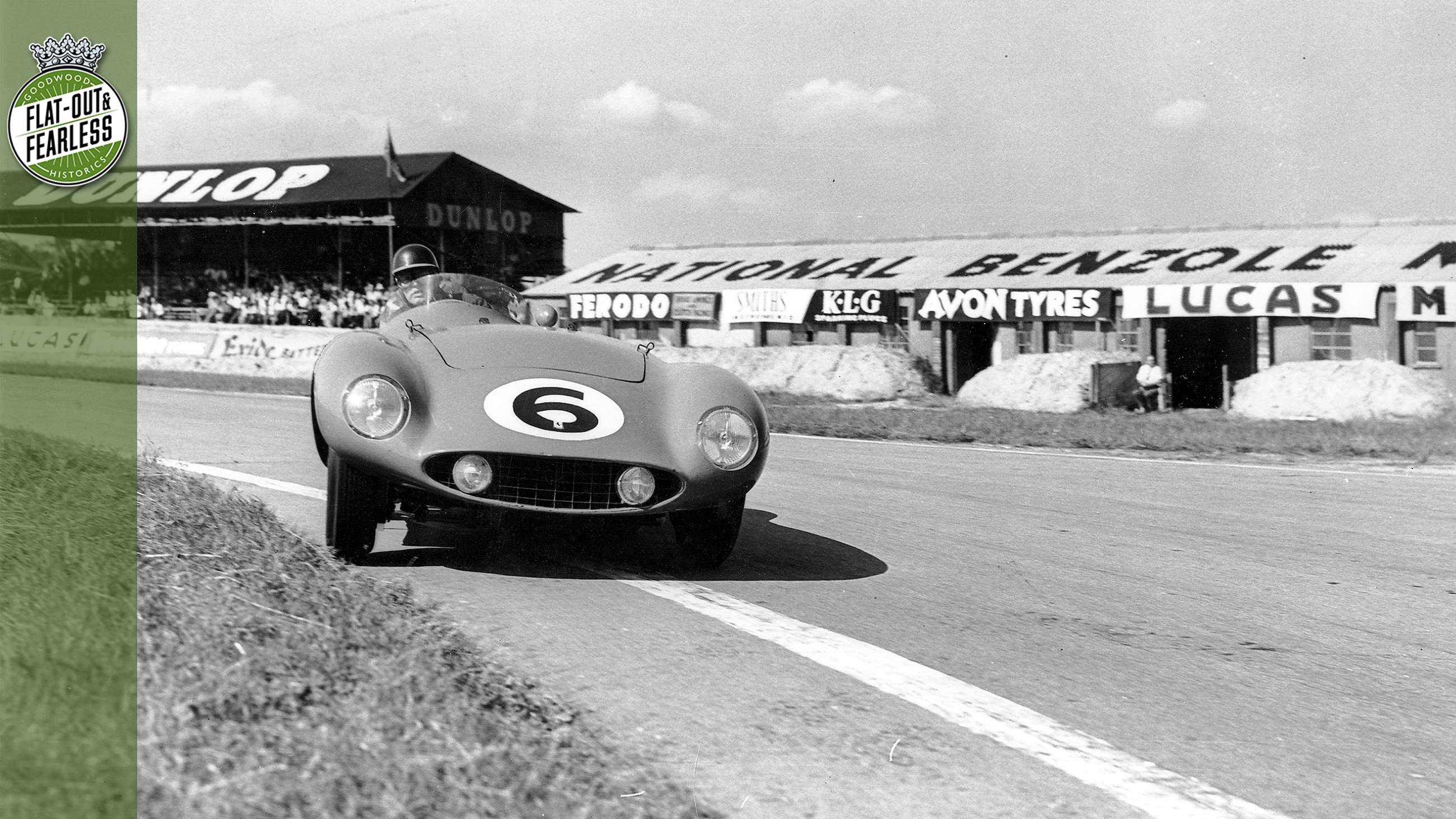

Doug Nye began writing about racing cars at ‘Motor Racing’ magazine in 1963-64. Today he is a multiple award-winning motor sports journalist and author of over 50 years’ experience, with some 70 books to his name. He is Goodwood Motorsport’s founding Historian and consultant and fulfils similar roles for Bonhams Auctioneers and the Collier Collection/Revs Institute in Naples, FL, USA. He is a member of the National Motor Museum Advisory Council at Beaulieu, Hants, and is a regular columnist for ‘Motor Sport’ magazine, while contributing to many other specialist periodicals worldwide.
Last Friday, January 22nd, was something special to some of us. Annually, on this date, various now-ageing 1950s friends, fans and interested Motorsport enthusiasts make a little pilgrimage to West Street Cemetery in Farnham, Surrey. They go to the westernmost edge of the burial ground, and there they find one headstone standing somewhat taller than the rest – and bearing the side profile of a 1958 Formula 1 Ferrari sculpted into it, framed by a laurel victory wreath.
This is the last resting place of John Michael ‘Mike’ Hawthorn, the great British racing driver whose name and career was inextricably entwined with the 1950s history of the Goodwood Motor Circuit. After a meteoric rise to prominence – most notably at Goodwood – he went on to become the first British driver to be recruited by the factory Ferrari team in Italy.
He promptly beat Fangio – driving for the rival Maserati team – to win a breathtaking 1953 French Grand Prix at Reims. He won again to win the 1954 Spanish Grand Prix at Barcelona, and in 1958 would win yet again in the French GP back at Reims. He just shaded Stirling Moss out of that latter year’s Drivers’ World Championship title by a single, solitary point, so becoming the first Brit ever to become Formula 1 racing’s Champion of the World…

1952 – Hawthorn back at Goodwood in Bob Chase’s Cooper-Bristol
He clinched that title in the Moroccan GP at Casablanca on October 19, 1958, and announced his retirement from racing immediately thereafter. Tragically, ‘The Farnham Flyer’, as the press had nicknamed him, had only three months of life left to him – and he crashed fatally in his 3.4-litre Jaguar saloon on the Guildford Bypass on that date that we in Farnham mark each year – January 22nd.
Young Mike Hawthorn had been encouraged by his motor engineering and garage-owning father Leslie to begin trying his hand at motor racing. Leslie’s Tourist Trophy Garage business in Farnham – now (most demeaningly in my view) housing wine and carpet shops – had a good reputation for preparing similarly enthusiastic customers’ cars, and during 1951 Mike did well in a family-owned Riley, winning the ‘Motor Sport’ championship of the period in Goodwood BARC Members’ Meetings.

1955 Goodwood 9-Hours start – great friends Peter Collins (left) and Mike Hawthorn sprint for their cars
For 1952 Leslie gained some backing for young Mike’s development from south-coast marine engineer Bob Chase, who bought them a brand-new Formula 2 Cooper-Bristol single-seater for the boy to race. That year’s Goodwood Easter Monday coverage in ‘Autosport’ magazine (April 18th issue) says it all. First, experienced observer Gregor Grant’s editorial reads:
“Coopers have done it again. The small Surbiton concern, which has become famous because of its Formula 3 cars, has produced a Formula 2 machine which scored a sensational 1-2-3 victory at Goodwood on Easter Monday, in its very first race, won a Formule Libre and a handicap event, and took second place to a 4 1/2-litre Ferrari driven by Gonzalez in the Richmond Trophy race… Mick (sic) Hawthorn returned 1 min 39secs (laptime) – 87.28mph – with the Cooper-Bristol… In Hawthorn, a new star twinkled in the motor-racing firmament. This young man has climbed straight from the cockpit of small-capacity sports cars to that of a single-seater, and every one of the huge crowd at Goodwood realised that they were watching a ‘natural’…”

Entrant Tony Vandervell (left) – Mike Hawthorn and the 1955 Formula 1 Vanwall Special
Mick – ahem, Mike – Hawthorn was certainly that. He was barely 23 years old – and his star would shoot through the motor racing world… until we would lose him at only 29. Gregor Grant’s Easter Monday Goodwood report included the following: ‘Star of the meeting was 23-year-old Mick Hawthorn, of Farnham, Surrey, who won two races and was second in the big event of the day, the Formula 1 Richmond Trophy.’
And then, in the programme-opening Lavant Cup race for Formula 2 cars: ‘Hawthorn was driving beautifully and began to draw away from the rest of the field, his car emitting a delightfully healthy snarl as he swung it rapidly through the chicane and past the stands…and by lap three Hawthorn’s lead was unassailable, turning the fastest lap at 84.7mph.’

Mike Hawthorn winning the Glover Trophy Easter Monday 1958 early in his Champion Year
In the Formule Libre Chichester Cup race: ‘Hawthorn’s diminutive Cooper, significantly, was in the front row… Hawthorn shot away… Hawthorn ran out a comfortable winner, his victory warmly clapped.’ And when Argentine superstar Froilan Gonzalez dominated the feature Formula 1 Richmond Trophy race in the big ‘ThinWall Special’ Ferrari V12 it was young ‘Mick’ who again cornered most of the praise:
‘The sensation of the raceway not the winner’s performance, however, but that of second man Mick Hawthorn in the Cooper-Bristol, who drove magnificently…’
And those of us who either collectively or (as in my case) individually paid our respects by the graveside on January 22nd remember first reading those words as clearly today as the first time they made their sensational impact. The Farnham Flyer had arrived…
Images courtesy of The GP Library

&width=75)
&width=75)
&width=75)
&width=75)
&width=75&fastscale=false)

&width=75)
&width=75)
&width=75)